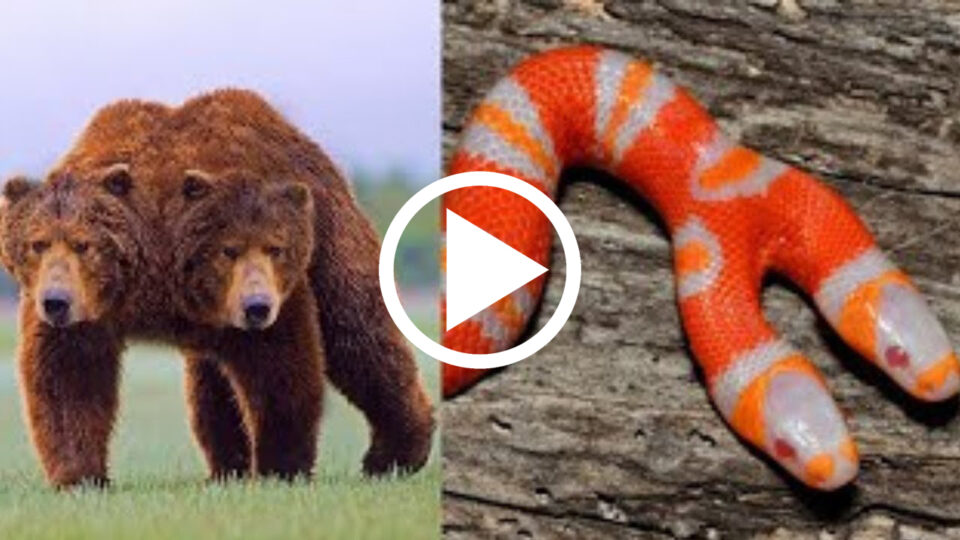Two-headed creatures aren’t just something out of a sci-fi story. Double-headed animals do exist in the natural world.
Having two heads attached to one body is a condition referred to as polycephaly. If you’re a little curious, stick around as we countdown 15 weird two-headed animals you won’t believe.
PORPOISE
The first known case of a two-headed harbor porpoise was documented when a Dutch fisherman in the North Sea accidentally caught the anomalous creature as bycatch in a beam trawl net.
Fearing it would be illegal to keep the deceased marine mammal, they threw it back into the ocean, but not before taking photos of their bizarre find and alerting researchers.
While case studies of conjoined twins have been studied in humans, reptiles, and domestic animals, they are rarely seen in wild mammals.
In fact, before this find, only nine other instances of two-headed cetaceans of any kind had ever been reliably documented.
The dorsal fins were not yet erect, the top of its heads still contained hairs, and it still contained an umbilical opening, indicating the porpoise died shortly after birth.
The tale had also not stiffened, a necessary development that porpoises need in order to swim.
On average, porpoises produce one offspring every one to two years, and even cases of twins are extremely rare.
Nearly 700,000 porpoises can be found around the world, with 345,000 residing in the North Sea, though never before with two heads.
SNAKE
A two-headed snake is an easy prey for a bored domestic cat roaming outdoors.
A family in Florida found out firsthand when their pet cat dragged a two-headed southern black racer in through the doggy door and dropped it on the living room floor.
The snake was still alive, so 13-year-old Avery Rogers placed it in a plastic container and sent a message to her mom Kay to let her know what their cat had found.
The family got in touch with local reptile experts to build a safe habitat for the snake, which they named Dos, after the Spanish word for “two”.
After about five days, the Rogers family transferred the snake to the Florida Wildlife Conservation’s Fish and Wildlife Research Institute.
The snake’s two-headed statue is called bicephaly, and it happens when an embryo begins to split into identical twins but doesn’t separate all the way.
The condition isn’t unique to snakes in humans, bicephaly results in conjoined twins.
A pair of conjoined twins can be connected at any point along the spine and share different organs depending on where they are connected.
Dos the snake has two independent heads with their own brains, flicking tongues and throats.
Unfortunately, that causes problems both when avoiding predators like the Rogers’ cat, and when trying to find its own meals. The snake’s two heads make it uncoordinated, so it struggles to eat.
One head would see the food and try to move toward it, but the other would pull in the other direction.
At the research institute, Dos has been able to eat every couple of days. It’s now over a month old.


